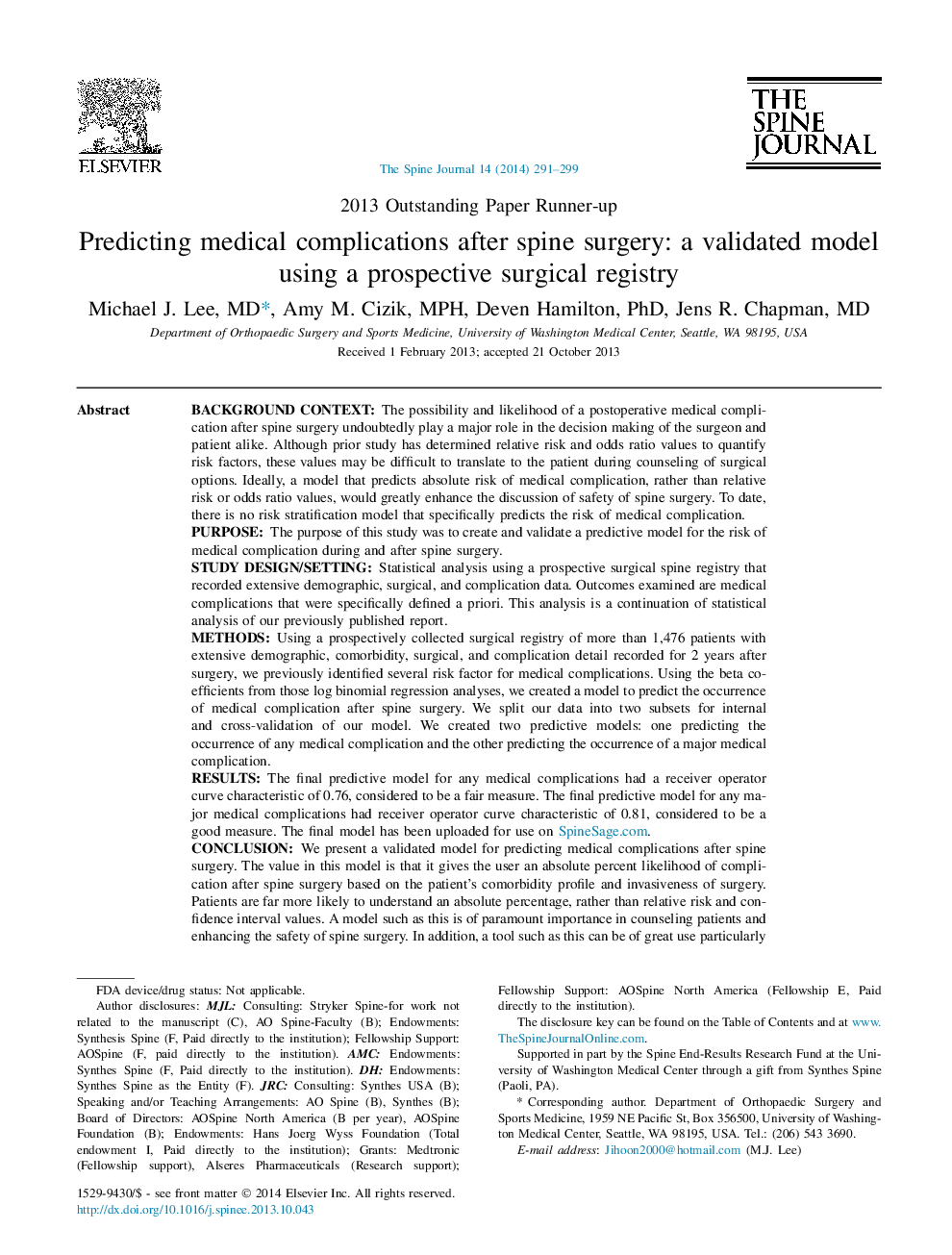| کد مقاله | کد نشریه | سال انتشار | مقاله انگلیسی | نسخه تمام متن |
|---|---|---|---|---|
| 6212885 | 1268605 | 2014 | 9 صفحه PDF | دانلود رایگان |
Background contextThe possibility and likelihood of a postoperative medical complication after spine surgery undoubtedly play a major role in the decision making of the surgeon and patient alike. Although prior study has determined relative risk and odds ratio values to quantify risk factors, these values may be difficult to translate to the patient during counseling of surgical options. Ideally, a model that predicts absolute risk of medical complication, rather than relative risk or odds ratio values, would greatly enhance the discussion of safety of spine surgery. To date, there is no risk stratification model that specifically predicts the risk of medical complication.PurposeThe purpose of this study was to create and validate a predictive model for the risk of medical complication during and after spine surgery.Study design/settingStatistical analysis using a prospective surgical spine registry that recorded extensive demographic, surgical, and complication data. Outcomes examined are medical complications that were specifically defined a priori. This analysis is a continuation of statistical analysis of our previously published report.MethodsUsing a prospectively collected surgical registry of more than 1,476 patients with extensive demographic, comorbidity, surgical, and complication detail recorded for 2 years after surgery, we previously identified several risk factor for medical complications. Using the beta coefficients from those log binomial regression analyses, we created a model to predict the occurrence of medical complication after spine surgery. We split our data into two subsets for internal and cross-validation of our model. We created two predictive models: one predicting the occurrence of any medical complication and the other predicting the occurrence of a major medical complication.ResultsThe final predictive model for any medical complications had a receiver operator curve characteristic of 0.76, considered to be a fair measure. The final predictive model for any major medical complications had receiver operator curve characteristic of 0.81, considered to be a good measure. The final model has been uploaded for use on SpineSage.com.ConclusionWe present a validated model for predicting medical complications after spine surgery. The value in this model is that it gives the user an absolute percent likelihood of complication after spine surgery based on the patient's comorbidity profile and invasiveness of surgery. Patients are far more likely to understand an absolute percentage, rather than relative risk and confidence interval values. A model such as this is of paramount importance in counseling patients and enhancing the safety of spine surgery. In addition, a tool such as this can be of great use particularly as health care trends toward pay-for-performance, quality metrics, and risk adjustment. To facilitate the use of this model, we have created a website (SpineSage.com) where users can enter in patient data to determine likelihood of medical complications after spine surgery.
Journal: The Spine Journal - Volume 14, Issue 2, 1 February 2014, Pages 291-299
